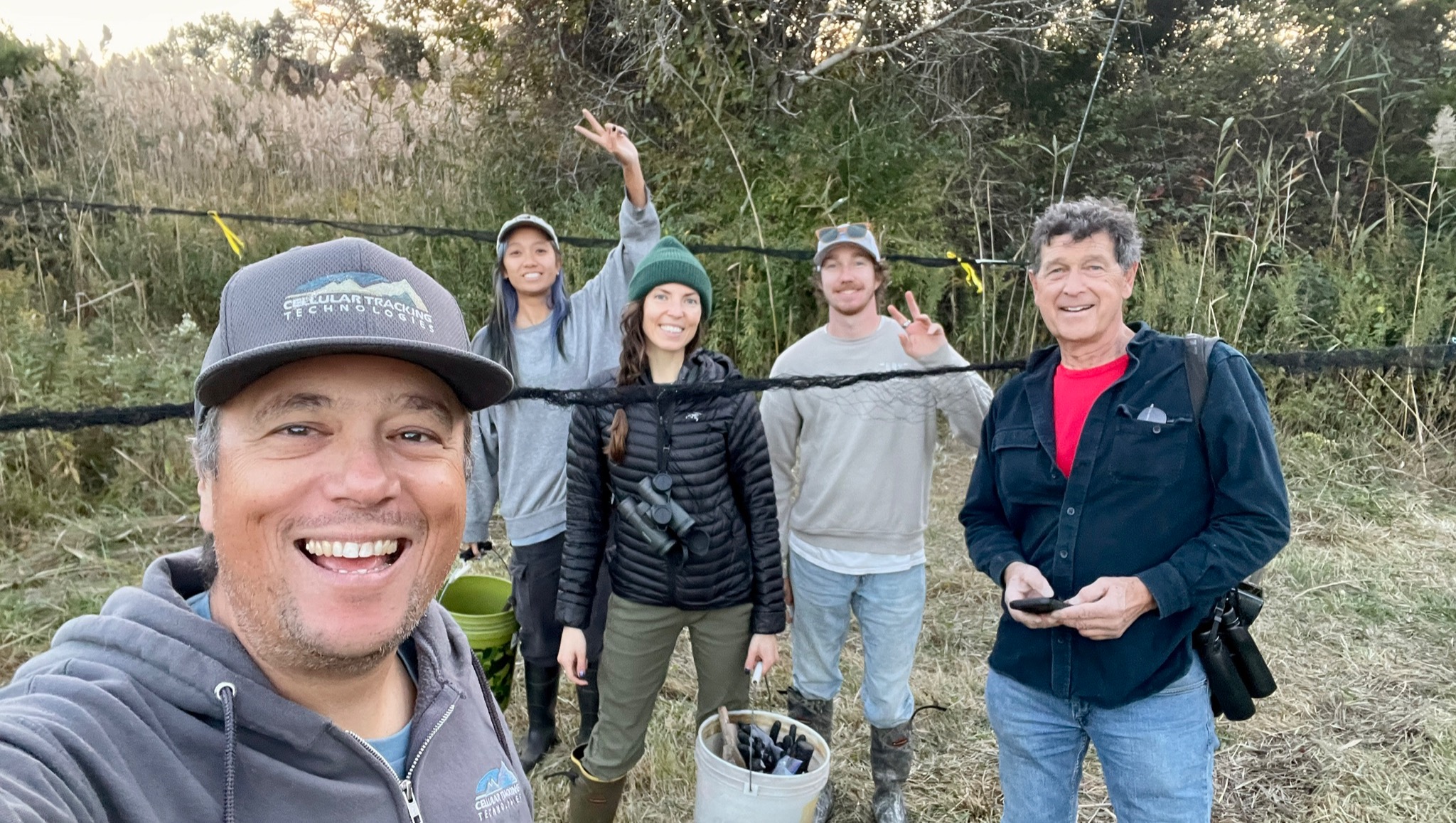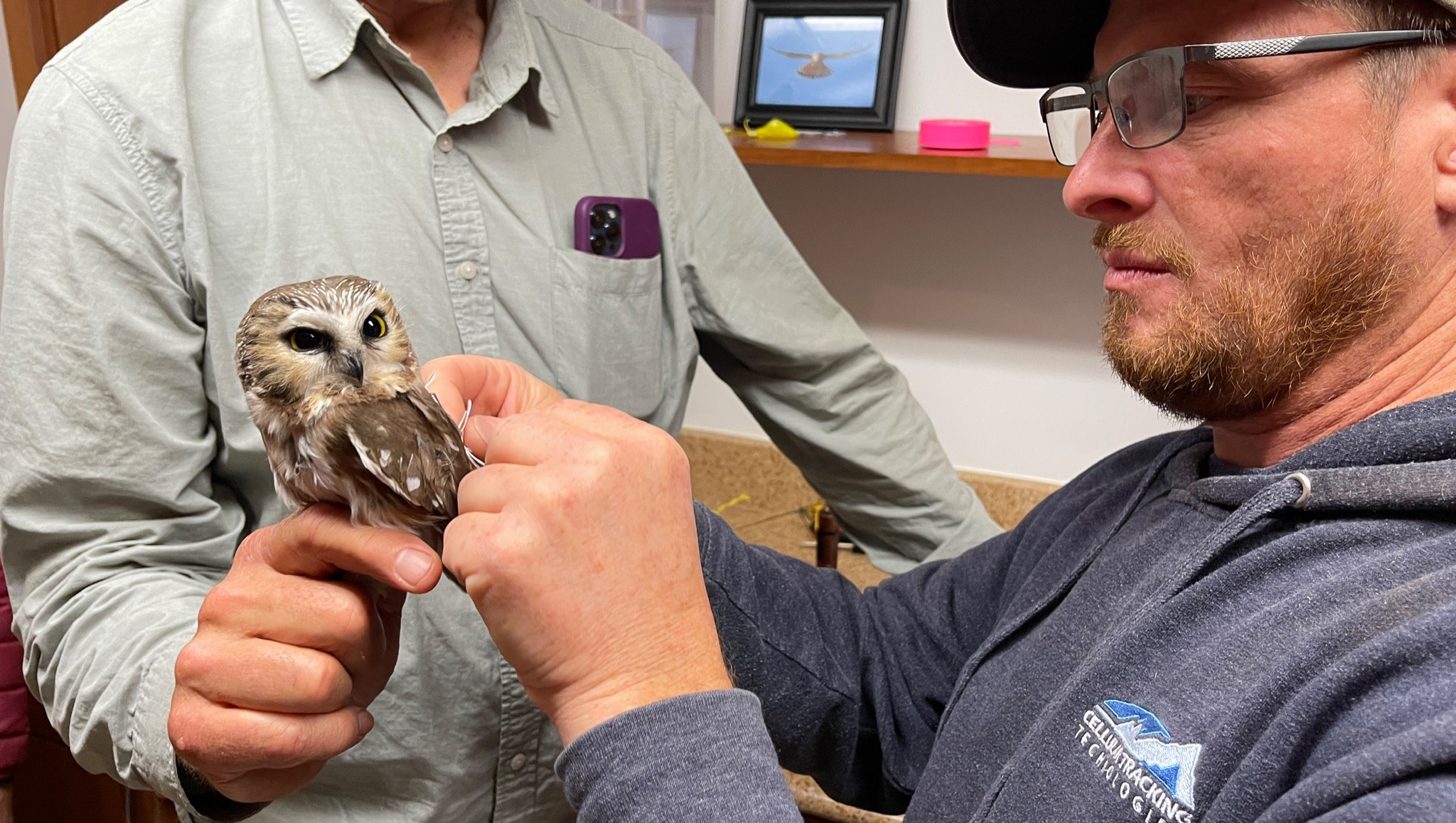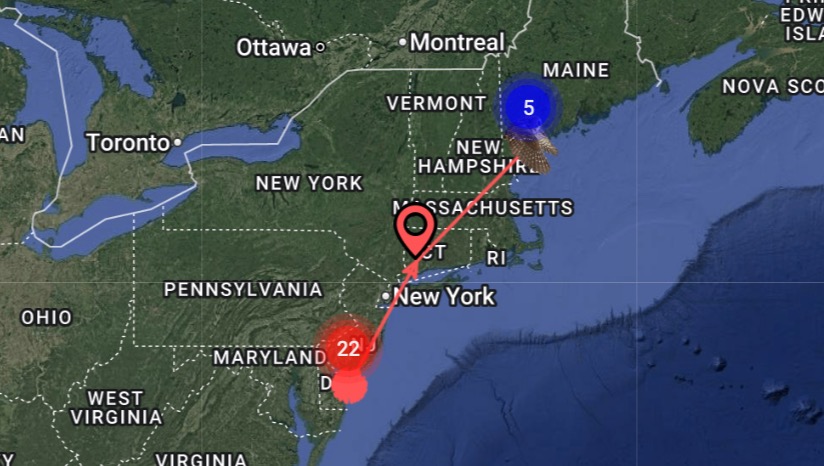We’re back for year two! Last fall, you helped us launch a cutting-edge owl tracking project in Cape May, NJ. This year, we’re expanding—deploying new-and-improved GPS backpacks and next-generation leg bands embedded with micro-transmitters. With your help, we’ll uncover where Northern Saw-whet Owls go, how long they stay, and what habitats they rely on year-round. These data are critical to conservation—but we need to act fast. The owls are coming. Will you help us track them?

Continued deployment of cutting-edge tracking technology to map the full annual cycle of Northern Saw-whet Owls
We are entering our second full field season of tracking Northern Saw-whet Owls in Cape May, New Jersey—a major stopover and overwintering site for this small, secretive species. In 2023, your donations helped us deploy seven Flicker ULP GPS transmitters, and the results were better than we could have hoped. We followed owls to Halifax, Nova Scotia, Scarborough Marsh, Maine, and Philadelphia, with others remaining in Cape May for weeks or months. These data opened a window into the migratory behavior of owls we had only guessed at before.
Now, we’re ready to go further.

New in 2025:
- Improved Flicker ULP transmitters with upgraded antennas to prevent owl-induced removal
- Next-gen BlūSeries leg bands with embedded transmitters—lightweight, low-power, and detectable by cell towers and Motus stations alike
- More owls, more data, more science.
Together, these tools will allow us to build detailed, fine-scale maps of owl movement—not just for days or weeks, but potentially across a full year. This kind of information is essential for conservation efforts at the regional and continental scales.
And we can’t do it without you.

Why this matters
The Cape May Owl Project is a long-term research initiative dedicated to understanding the health, behavior, and ecology of migratory owls—especially those using Cape May as a seasonal stopover or winter home. While traditional bird banding has revealed important insights, it depends on chance recaptures. With telemetry, we can follow individual birds as they move across the continent, identifying critical stopover and breeding areas, migration routes, and seasonal timing.
This year, we plan to deploy at least 10 Flicker ULP GPS backpacks and a series of BlūSeries leg-band tags on Northern Saw-whet Owls captured during nocturnal banding efforts from October to December. These deployments are fully permitted at the Federal, State, and Local levels and carried out by trained researchers.
What we need
We still have a few Flicker ULP backpacks left from last year, which CTT has offered to refurbish for us with fresh batteries and updated antennas. Our first goal of $5,000 will effectively allow us to purchase 2 more Flicker ULP devices (at a steep discount) and six of the new BlūSeries leg bands.
If we can raise the full $20,000 we will be able to purchase a total of 8 Flicker ULP backpacks and 25 BlūSeries leg bands, giving us a total of 10 Flicker ULP devices, and a solid sample size of both technologies for this season.
How you can help
- Donate today — Every contribution helps us get closer to our goal.
- Share this campaign — Spread the word to other owl lovers, birders, scientists, and conservationists.
- Follow our updates — We'll keep you in the loop with owl movements, map updates, and behind-the-scenes photos from the field.
Bonus: What we learned in 2024
This past fall, we banded 87 owls (including a record 7 Barred Owls!) and recaptured 19 individuals across the season. Thanks to our GPS tracking efforts, we now know that many Northern Saw-whet Owls don’t just pass through Cape May—they stop over for an average of 11 days, and sometimes for more than a month. This reinforces the idea that Cape May is not just a migratory flyover—it’s essential habitat.
By continuing and expanding this work, we’re contributing to one of the most exciting conservation data sets on migratory owls in the eastern US.
Thank you!
This project is led by a dedicated team of volunteers and researchers.
We're incredibly grateful to everyone who helped make year one a success. Let's keep the momentum going.
— The Cape May Owl Project Team
David, Trish, Charlie, and Mike
Donations are tax-deductible through our nonprofit partner, Conservation Science Global, Inc.
All research is conducted under valid federal and state permits.








